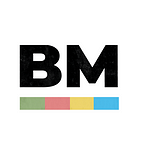What is a UX storyboard?
A storyboard in UX design is a tool that visually predicts and explores the user’s experience in interacting with a product. In practice, storyboard design in UX is very similar to a movie storyboard — it depicts people in different situations. UX design techniques help designers understand how people can use a website, an application, or a program and what is the most important to them.
Benefits of using UX storyboards in marketing campaigns for a small business
Stories are a very effective way to gain, share, and learn user experience. In UX design, this method has the following advantages:
- It focuses on users’ needs. Storyboard designs put people at the center of the design process. It is the person who is the main part of this process, not an analyst or research results.
- Understanding of customer actions. A video storyboard allows you to look at existing interaction scenarios in detail and test hypotheses for potentially different ways of gaining experience.
- Prioritization. Storyboarding also allows you to determine which things are not worth spending money and effort on.
- Constructive criticism. Storyboarding allows the entire team to be involved in the process, not just designers. It is like the film industry: every scene can get any team member to speak up. Storytelling inspires to collaborate and develop a clearer understanding of the product. This is how new design concepts emerge.
- Simplified iteration. Storyboards are very useful when it’s not clear what the product should become. Sketching allows designers to work without a lot of effort while testing multiple versions at the same time. As a result, the design process is significantly shorter.
How to create UX storyboards?
You can see a lot of beautiful and interesting examples of storyboarding in web design on the internet. But there’s a problem. When it comes to creating a storyboard design, the first thing most people think of is drawing. The good news is that you don’t need to draw well to make an effective storyboard. In order for a storyboard in marketing to work, other skills are required, such as the ability to formulate your thoughts and describe a scene.
Before starting to draw and coming up with signatures, the UX designer has to do some preliminary preparation. The story should be logical and understandable. When you know the key points of the story, you can add blocks of illustrations to it, building a clear visual sequence. Each story should have the following elements:
- The character. The character is a user who is the key figure of the story. Their behavior, expectations, feelings, and any decisions they make are very important. Identifying what is happening in the character’s mind is essential to successful illustration of their experience. Every story must include at least one character.
- Scene. This is the environment in which the character lives. The scene must be based on real context, so these should be existing places.
- Plot. The story should begin with a specific trigger event and end with a specific benefit or a problem that the product solves.
- Narration. The narration should focus on the goal that the character is aiming for. Designers very often go straight to describing the benefits of a product, forgetting about the backstory. Any storyboard for video or other marketing campaigns should be structured and have an obvious beginning, middle part, and ending. Most of the stories are a sequence of actions that is called the pyramid of Gustav Freytag, who broke the story into five acts: exposure, upward action, climax, ending action, and denouement.
To make your story interesting and impressive, keep in mind the following points:
- Clarity. The most important thing is to make the character, their goal, and their experience as clear as possible. The result of the story should be understandable to anyone viewing the storyboard. If the story describes a problem, it should be clear which solution will improve the character’s life.
- Authenticity. When creating a marketing storyboard template, you need to rely on the real experience of the people for whom the design is being created. If you tell a story without referring to facts, the storyboard is useless. The closer the storyboard is to a real situation, the better the result will be.
- Simplicity. Every detail in the story should be relevant to the user’s experience. Everything else can be thrown away as unnecessary information. If a scene does not mean anything and does not affect the result, it must be deleted.
- Emotion. The story needs to include emotions. In the storyboard, the character must clearly respond to certain qualities of the product.
Trends of storyboard business presentation in 2021
Check out these storyboard examples that fully meet all of the modern trends:
- Focusing on a significant value.
- Complicated animation of exceptional quality.
- Asymmetry and screen splitting.
- Nice colors.
- Combining all fast-downloading uncontrolled videos that are built-in.
- Blank space.
- A very detailed picture of products and people using them.
A successful UX storyboard is a great tool for promoting a product, especially for small businesses that often don’t have many resources to promote their products and services. The best solutions may be simple or complex, but they are always effective in giving your business a new breath. The main thing you need is understanding of how to identify and visualize people’s needs.
